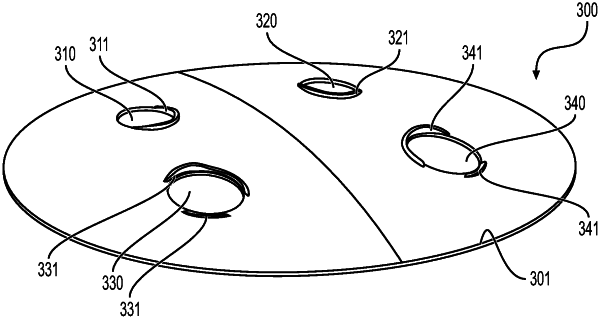| CPC F21S 41/24 (2018.01) [B60R 13/005 (2013.01); F21S 41/141 (2018.01); F21S 41/32 (2018.01); G09F 13/22 (2013.01); F21Y 2115/10 (2016.08); G09F 2013/222 (2013.01)] | 11 Claims |

|
1. A vehicle design element including a light assembly, the assembly comprising:
a light guide including a front surface, a rear surface, a plurality of light entry regions and a light diffusing region;
a plurality of light emitting diodes (LEDs), each LED positioned adjacent to and directed towards a respective light entry region, wherein light from each LED enters the light guide via its respective light entry region and is directed toward the light diffusing region of the light guide via internal reflection;
a reflector element positioned behind the light guide adjacent to the rear surface of the light guide, the reflector element including a plurality of apertures corresponding to each LED and light entry region, the reflector element further including a front surface configured to reflect light toward the light guide;
wherein the reflector element and light guide further comprise complimentary ribs and channels for controlling light distribution near the light entry regions, where the ribs are formed around the apertures in the reflector element, extending out from the front surface of the reflector, where they are configured to nest in complimentary channels formed in the rear surface of the light guide so as to interrupt the passage of light rays that have entered the light guide via the light entry regions.
|